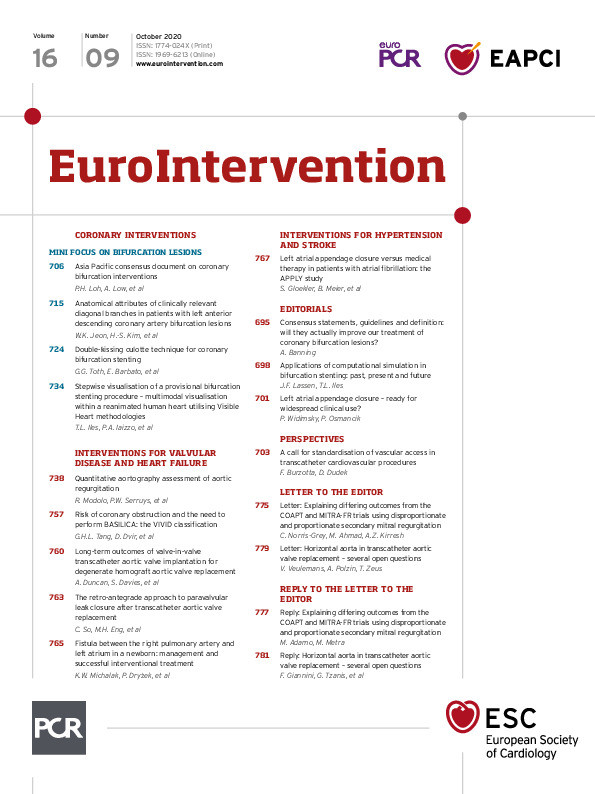
We read with interest the article by Adamo et al1 exploring the differences in outcome between patients with disproportionate and proportionate secondary mitral regurgitation (SMR) undergoing edge-to-edge percutaneous mitral valve repair using the MitraClip system.
Grayburn et al2 hypothesised that the opposing results from the COAPT and MITRA-FR trials could be explained by the different patient populations. Patients with disproportionate SMR were believed to benefit from the MitraClip, and those with proportionate SMR were thought not to respond. This offered an exciting explanation that could lead to enhanced patient selection when considering who may benefit from the MitraClip procedure. However, Adamo et al failed to observe any statistical difference between the outcomes of MitraClip recipients with proportionate and disproportionate SMR.
Rather than rejecting the subdivision of SMR patients into disproportionate and proportionate, it might be worth looking at other characteristics of this very heterogenous group. Sims et al3 recently described a subset of patients with SMR undergoing MitraClip surgery who had normal left atrial pressure (LAP). These patients were found to have a smaller effective regurgitant orifice area (EROA). Patients with proportionate SMR were shown by Adamo et al to have a lower EROA, suggesting that patients with normal LAP fall mainly within the proportionate category of SMR. Normal LAP was not itself a predictor of one-year mortality, but it was found to be highly associated with chronic lung disease. Chronic lung disease was a strong predictor of higher one-year mortality. Given these findings, it would be interesting to see whether the addition of LAP in the multivariable analysis of outcomes between disproportionate and proportionate SMR would alter the results.
Finite element analysis of the MitraClip procedure was performed by Kong et al4 and showed that, regardless of the positioning of the clip, in either a lateral or central position, coaptation was incomplete. This may explain to some degree why residual MR >1+ at 30 days was more frequently observed in patients with an EROA greater than the median value in the study performed by Adamo et al. It could be argued that the larger the pre-procedure EROA, the more incomplete the coaptation, hence the greater the likelihood of residual MR. Kong et al also reported that the shear pressures increased by 64% and 62% on the anterior and posterior leaflets, respectively, after the clip placement. The impact on patient outcomes of shear stress has yet to be determined but could be modelled for disproportionate and proportionate SMR.
Finally, data from Mahabir et al5 looking into MitraClip-related injuries and deaths in the first four years after approval revealed 200 death reports and 1,666 injury reports; 21% of deaths occurred more than one year after the procedure and damage to the valvular apparatus was among the top three causes of procedure-related death. Given these numbers, we suggest further analysis of the mortality rates in the study by Adamo et al. Furthermore, as MitraClip became more widely used, injuries increased but deaths increased slightly, suggesting an operator learning curve. This may also affect results between different centres.
Conflict of interest statement
The authors have no conflicts of interest to declare.
Supplementary data
To read the full content of this article, please download the PDF.

